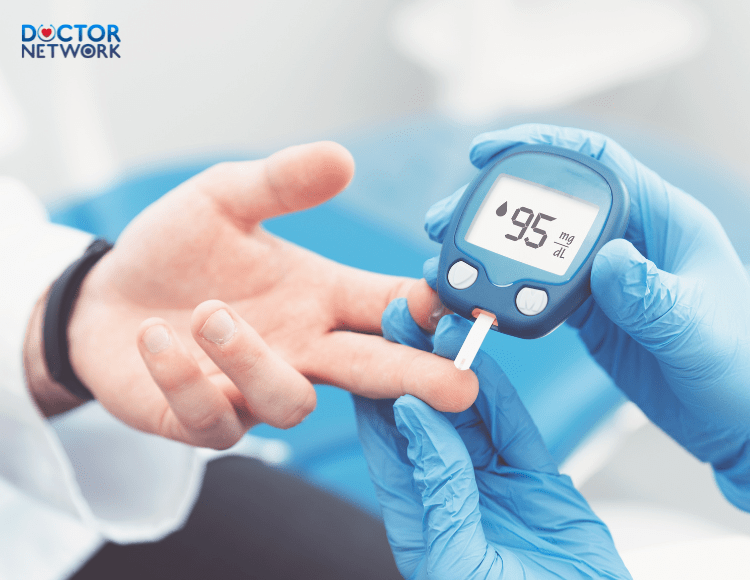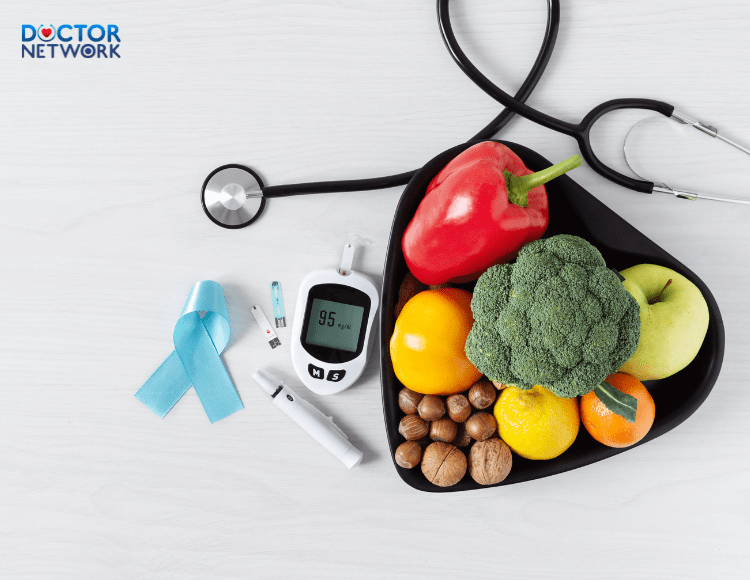Diabetes is a prevalent and dangerous condition today. To treat individuals with diabetes effectively, it is necessary to apply some comprehensive approaches to treat diabetes at the root to ensure effective blood sugar control. Please refer to the article below for more information!
What is Diabetes?
Diabetes, also known as diabetes mellitus, is a medical condition where the body cannot efficiently regulate blood sugar levels, leading to elevated levels of glucose in the blood.

Diabetes is a prevalent health condition nowadays
Types of Diabetes
Diabetes is generally classified into two main types:
1. Type 1 Diabetes
Typically begins in childhood (often during adolescence or earlier). Type 1 diabetes results from the immune system attacking the beta cells in the pancreas, which produce insulin. Due to the lack of insulin, individuals with Type 1 diabetes need regular insulin injections to maintain normal blood sugar levels.
2. Type 2 Diabetes
Commonly occurs in adults and is a result of the body’s reduced ability to produce insulin or the body cells’ inefficient use of insulin (insulin resistance). Type 2 diabetes is often associated with an unhealthy lifestyle, including imbalanced diet and lack of physical activity.
Symptoms of Diabetes
Diabetes may manifest a variety of symptoms, but common signs include:
- Frequent urination: Individuals with diabetes often need to urinate more frequently, especially at night, as the body attempts to eliminate excess sugar through urine.
- Increased thirst and hunger: Despite consuming a lot of water, constant thirst may persist. Additionally, individuals may experience heightened hunger due to the body’s ineffective use of glucose.
- Body imbalance: Rapid weight loss is a common symptom, particularly in individuals with Type 1 diabetes, as the body cannot use glucose to provide energy to cells.
- Fatigue: The lack of energy resulting from the inability to use glucose leads to feelings of fatigue and weakness.

Stress, pressure is one of the factors leading to diabetes
- Vision changes: Diabetes can cause vision problems, such as blurred vision, color perception changes, or visual cloudiness.
- Slow healing and increased susceptibility to infections: Individuals with diabetes may experience delayed wound healing, and injuries can easily become infected.
- Itchy skin and fungal infections: Some individuals with diabetes may suffer from itchy skin and be prone to fungal infections, especially in moist areas.
These symptoms can range from mild to severe and are more commonly observed in Type 1 diabetes. If you or someone you know experiences any diabetes symptoms, seeking advice from a doctor for timely diagnosis and treatment is crucial. Diabetes is a lifelong condition, and early intervention can help prevent serious complications.
Comprehensive Approaches to Treat Diabetes at the Root
1. Medication
The increasing prevalence of diabetes has led to the development of various drugs specifically designed to treat the condition. Each type of medication has distinct indications and effects. Common groups of diabetes medications include Sulfonylureas (SU), Alpha-glucosidase inhibitors, Biguanides (BG), Thiazolidinediones, DPP-4 inhibitors, and SGLT2 inhibitors.
2. Healthy Eating Habits – approach to treat diabetes at the root
- Prioritize fiber-rich and low glycemic index foods, such as green vegetables, grains, oats, and sugar-free fruits.
- Limit the intake of sugary foods, spicy foods, fast food, and foods high in saturated fats.

Providing fiber from vegetables helps limit the amount of sugar
3. Treat diabetes at the root – Regular Exercise
- Regular physical activity enhances the body’s sensitivity to insulin and helps control blood sugar.
- Activities like walking, swimming, cycling, and yoga are beneficial for individuals with diabetes.
4. Regular Blood Sugar Monitoring
- Daily monitoring of blood sugar levels using a glucose meter.
- Track and record results to evaluate progress and make informed adjustments.
5. Treat diabetes at the root – Adherence to Treatment Plans
- Type 1 diabetes requires regular insulin injections following a prescribed schedule.
- Type 2 diabetes management involves adhering to medication use and blood sugar monitoring guidelines.
6. Stress Management
Engage in stress-reducing techniques like meditation, yoga, or exercise to alleviate stress and maintain emotional balance.
7. Overall Health Monitoring
Maintain a healthy body weight, undergo regular eye checkups, visit the dentist periodically, and check for early signs of foot injuries.
8. Self-Education
Learn more about diabetes to understand the condition better and effectively manage it, it is also one of the approaches to treat diabetes at the root.
It is essential to note that each diabetes case is unique, and treatment plans may be individualized based on a doctor’s guidance. Always discuss any changes in your treatment plan with your healthcare provider. The article has provided a general overview of diabetes and, specifically, comprehensive approaches to treat diabetes at the root, contributing to effective diabetes prevention.
Kiểm Duyệt Nội Dung
More than 10 years of marketing communications experience in the medical and health field.
Successfully deployed marketing communication activities, content development and social networking channels for hospital partners, clinics, doctors and medical professionals across the country.
More than 6 years of experience in organizing and producing leading prestigious medical programs in Vietnam, in collaboration with Ho Chi Minh City Television (HTV). Typical programs include Nhật Ký Blouse Trắng, Bác Sĩ Nói Gì, Alo Bác Sĩ Nghe, Nhật Ký Hạnh Phúc, Vui Khỏe Cùng Con, Bác Sỹ Mẹ, v.v.
Comprehensive cooperation with hundreds of hospitals and clinics, thousands of doctors and medical experts to join hands in building a medical content and service platform on the Doctor Network application.























